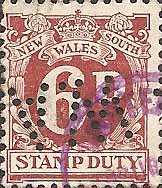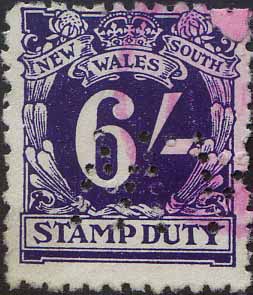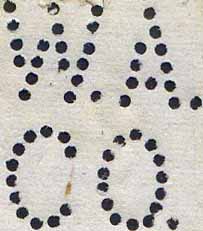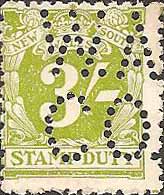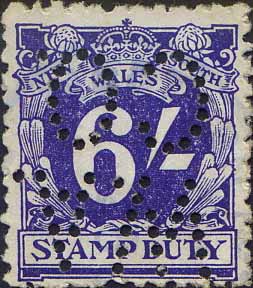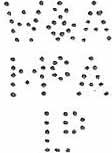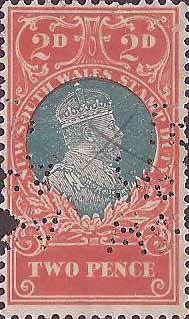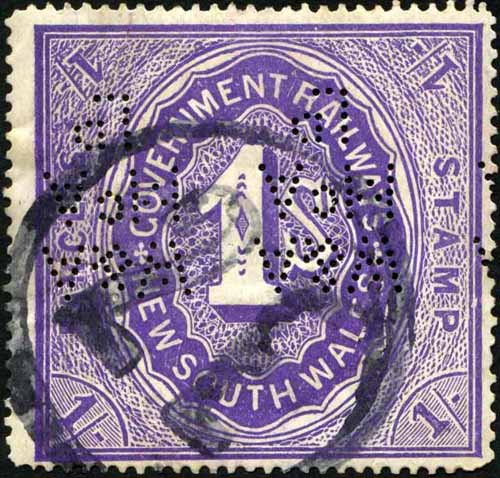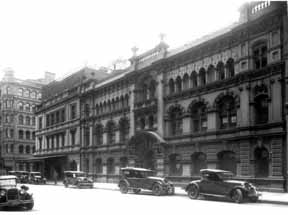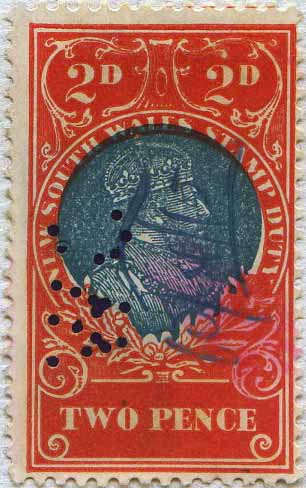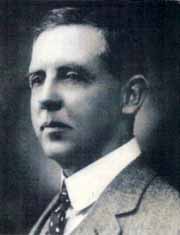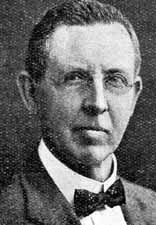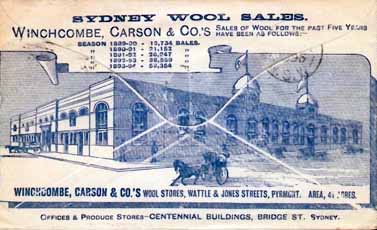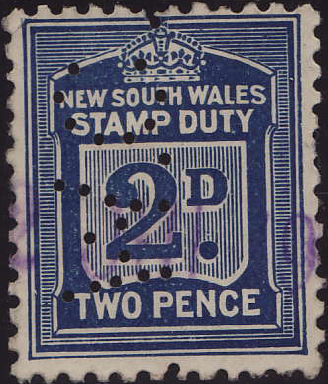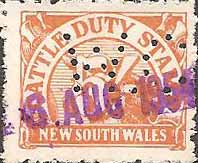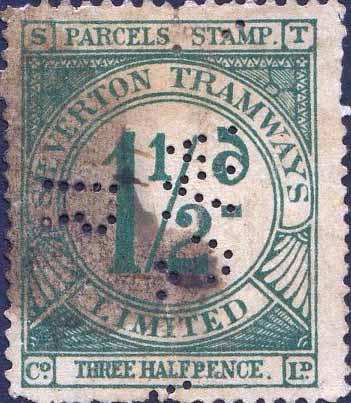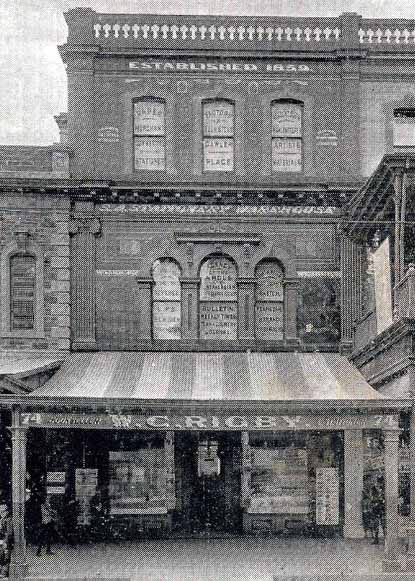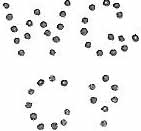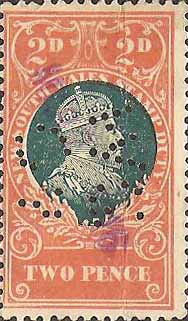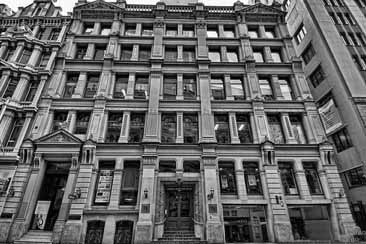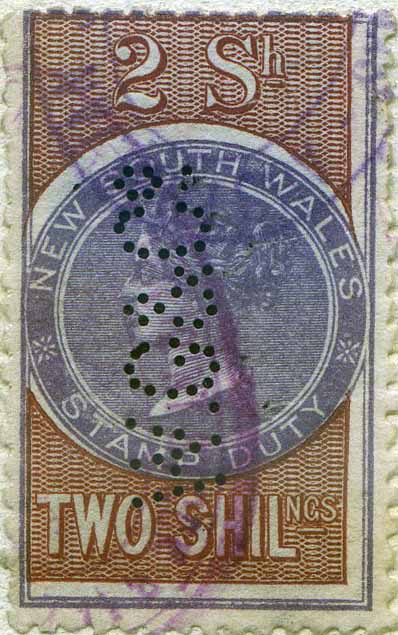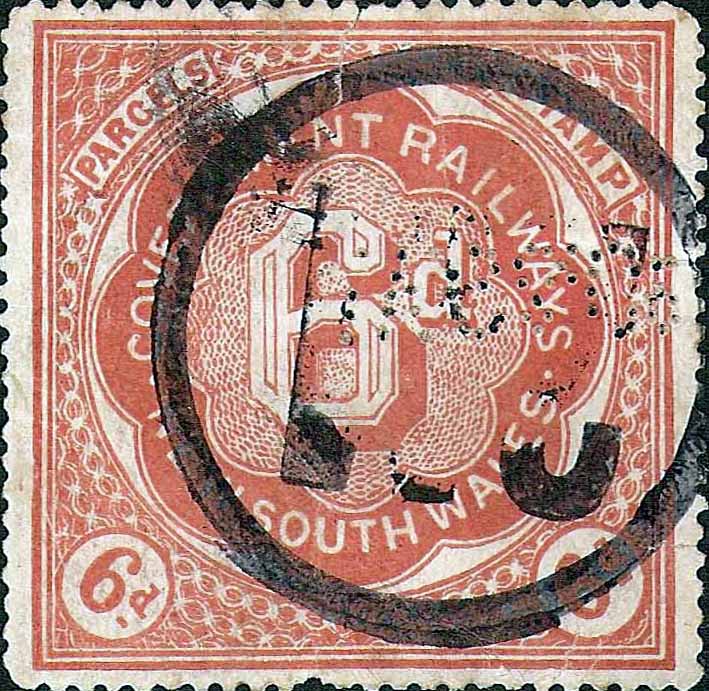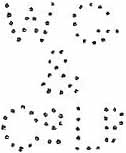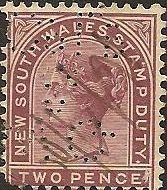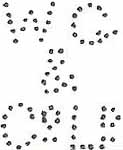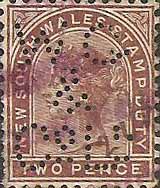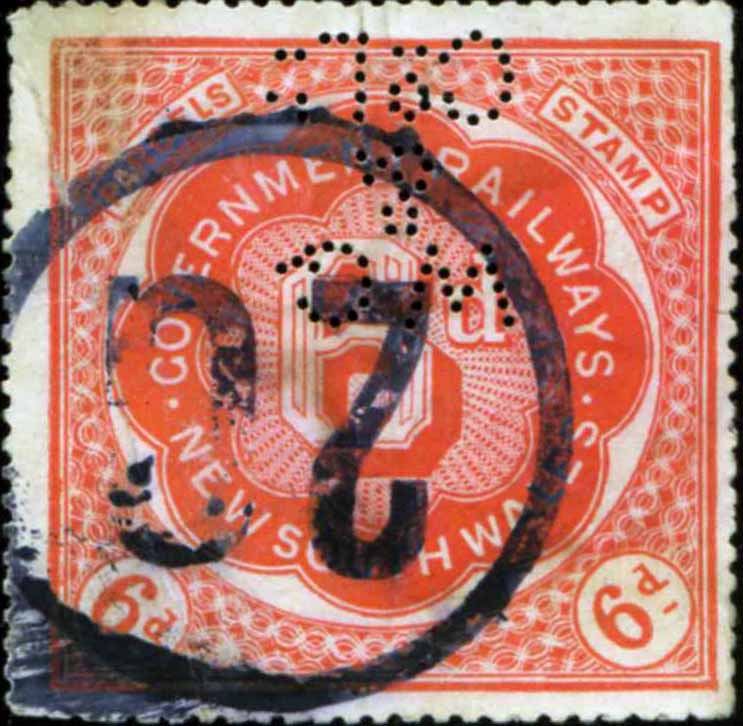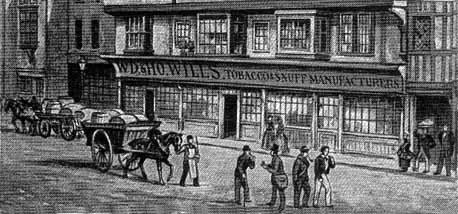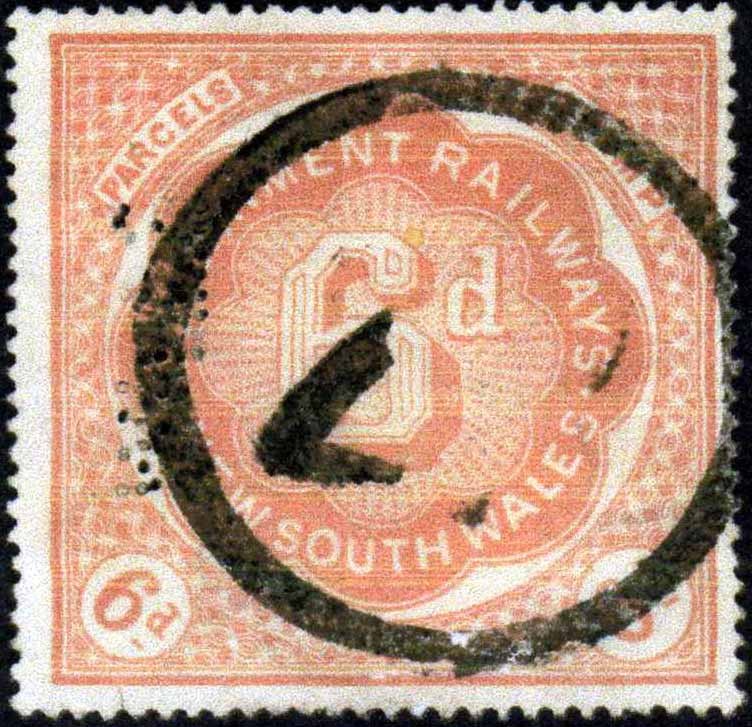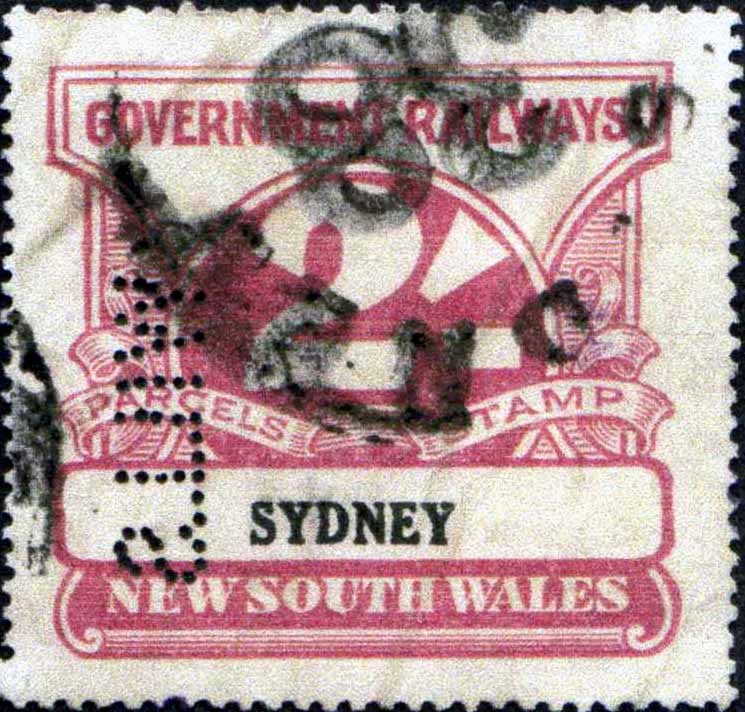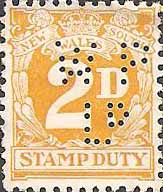|
Private Revenue Perfins of New South Wales An Elsmore Coath production The authors would welcome your comments additions or input into this work A B C D E F G H I J K L M N O P Q R S T U V W Y Other W -------------------------------------------------------- W.A..a
User: Western Assurance Co Insurance Provider Address: 107 Pitt St, Sydney, NSW (Head Office) 15-17 Hamilton St, Sydney, NSW (Sydney Office) Revenue Use: Numeral 1929-66 issue 2d, 3d, 6d, 9d, 9d[no wmk], 1/-, 1/-[no wmk, 1/6, 1/6[no wmk], 2/-, 2/6, 3/-, 4/-, 5/-, 5/-[no wmk], 6/-, 8/-, 10/-, 12/-, 14/-, 16/-, 18/-, 18/-[yellow], £1, 30/-, £5 Rarity Scale: Numeral 1929-66 issue 2d R2, 3d R2, 6d R2, 9d R2, 9d[no wmk] R2, 1/- R2, 1/-[no wmk] R3, 1/6 R2, 1/6[no wmk] R3, 2/- R3, 2/6 R4, 3/- R2, 4/- R4, 5/- R3, 5/-[no wmk R4, 6/- R3, 8/- R3, 10/- R2, 12/- R3, 14/- R3, 16/- R4, 18/- R4, 18/-[yellow] R3, £1 R2, 30/- R2, £5 R4 Background: *Western Assurance Co Ltd. was incorporated in Canada and was known to have operated in Sydney between the late 1930’s and until the early 1960’s. It was absorbed in one of the many company takeovers and amalgamations that were a feature of the Insurance industry in the 1960’s and 70’s and indeed the entire 20th century. The Western Assurance Co was acquired by Royal Insurance which later merged with Sun Alliance, itself a product of mergers between the Sun, Alliance, London and later Phoenix Insurance companies. The resulting company Royal Sun Alliance was formed in 1996 and was later (2008) rebadged as RSA Insurance Group and is headquartered in London. As part of these changes the companies activities in Australia and New Zealand are restructured under the Promina Brand and the General Insurance arm is renamed Vero. The Western Assurance Co is not to be confused with the ‘Western Australian Insurance Ltd’. This company was formed in Perth in 1912 as a fire and general company and expanded into the Eastern states of Australia, and to London in 1913. The Life Insurance department was not started until the end of 1918 and operated only from London and did not write Life Insurance business in Australia. After 1945 it was operating only from the United Kingdom and it was still trading in the late 1970’s.
Another
similarly named company the 'Western Australian
Insurance Co. (Canberra) Ltd' was floated by
Manufacturers Mutual Insurance in 1959 with a view
to purchasing the Australian business of the
aforementioned ‘Western Australian Insurance Ltd’
(1912). This company did not trade but secured the
assurance that the 1912 entity would not do any
more business in Australia.
The WA.a device is clearly the result of a modification of the WA/CO.a (see below) the ‘WA’ parts of the patterns match perfectly to each other. The earliest examples of WA.a we have found are from 1955 but not all Weston Assurance cachets carried a date field so evidence is difficult to obtain.
The pattern is only found used on the revenue stamps of NSW and only over the period from at least 1955 until 1964.
Related patterns: Refer to other Western Assurance patterns in:
NSW: WACO.a
QLD: Other Section 1 Cancelling Devices
Western Assurance Co
*Trove -------------------------------------------------------- W.A./CO..a
User: Western Assurance Co Insurance Provider Address: 107 Pitt St, Sydney, NSW (Head Office) 15-17 Hamilton St, Sydney, NSW (Sydney Office) Revenue Use: Numeral 1929-66 issue 2d, 4d, 6d, 8d, 1/-, 1/6, 2/-, 2/6, 3/-, 4/-, 5/-, 6/-,10/-, £1, £5 Rarity Scale: Numeral 1929-66 issue 2d R2, 4d R3, 6d R2, 8d R3, 1/- R3, 1/6 R3, 2/- R4, 2/6 R3, 3/- R3, 4/- R3, 5/- R1, 6/- R3, 10/- R4, £1 R4, £5 R4 Background: See WA.a
Device: The WA/CO.a device is a single die device as multiple strikes do not show any consistent relationship to each other. The WA/CO die is rather large when compared to the contemporary NSW revenue stamps of the Numeral series. This large die head removed a great deal of the stamp and the close proximity of much of the pattern to the edge of the stamp would have made separating perforated multiples rather difficult.
With stamps carrying this pattern you will often find parts of the stamp torn away as a result of the tear following the line of the pattern, rather than the perforation line between stamps. Also there are many examples of these patterns on stamps that have been cut with scissors or the like. This supports the premise that there were difficulties in separating stamps once they had been perforated.
In the late 1940’s or early 1950’s the device was altered and the ‘CO’ removed and it became the WA.a device (see above).
The WA/CO.a device is only found used on the revenue stamps of NSW and only in the period from 1942 until 1947.
Related patterns: Refer to other Western Insurance patterns in:
NSW: WA.a
QLD: Other Section 1 Cancelling Devices
Western Assurance Co -------------------------------------------------------- W&A/McA/LD.a
User: W & A McArthur Ltd Warehousemen Address: 77-79 York St, Sydney, NSW Revenue Use: KEDVII 1909-28 issue 2d Rarity Scale: KEDVII 1909-28 issue 2d R4 Railway Use: 1891 issue 3d, 6d, 1/- Rarity Scale: 1891 issue 3d R3, 6d R3, 1/- R3 Background: *Alexander McArthur was born on 10 March 1814 at Enniskillen, County Fermanagh, Ireland, son of John McArthur, and his wife Sarah, nee Finlay. In 1830 he was apprenticed in 1830 to a merchant in nearby Omagh. Alexander’s health was not good and after severe fevers he decided to migrate to NSW arriving in Sydney on 24 January 1842. He started a business selling a consignment of goods from his older brother William but shortly after became partner of William Little and James H. Atkinson. In 1848 he returned home to Ireland and their in 1850, with his brother William, he formed W. and A. McArthur & Co., softgoods merchants. Alexander returned to Sydney in 1851 with more stock but also used his shipping contacts to profit from the shipments of gold, which were starting to leave the Colonies. These funds allowed him to build a large Sydney warehouse as well as opening branches in Adelaide, Melbourne, Brisbane and Auckland. Alexander married in 1853 and in 1854 he visited England. Returning to Sydney in 1855 he accepted a number of Directorships in the booming commercial environment and in 1859 he entered politics, initially in the Legislative Assembly but from 1861 in the Legislative Council. In 1863 Alexander took over the London operations of the business as well as re entering politics as the member for House of Commons from 1874-1892. In 1898 W. & A. McArthur & Co. became a limited liability company (incorporated in London) with Alexander as a director, however the new company did not do well and in the by 1907 it was liquidated only to be reconstituted in 1908. Alexander died in London, on 1 August 1909 but the company continued to trade and returned to being profitable until the mid 1920’s when profits declined and in addition the company was embroiled in a legal battle with the Federal Government over wartime tax revenue. The company sold its York St property in early 1926 and subsequently sold its total stock to Robert Reid and Co and then went into liquidation in 1927.
77-79 York St, Sydney (C 1927) Device: The W&A/McA/LD.a device was a multi die device of at least 3 dies in a horizontal array. From Multiple strikes we have been able to confirm a consistent separation exists between the dies in the horizontal but not the vertical, indicating that the dies are in a horizontal array.
It is possible that there was a 4th die, but we have not been able to confirm the precise structure of the device. The device is more than likely English given the companies head office is located in London and the style of the letters is consistent with contemporary English dies.
The dies are essentially identical and therefore we have listed it as a single pattern.
The W&A/McA/LD.a pattern is found on the revenue, railway and postage stamps of NSW as well as the postage stamps of Australia (from 1913). The device was in service from as early as 1904 until at least 1916. Other studies have suggested that the usage continued until 1921 but this is not supported by the postmark and stamp issue evidence that we have seen. The company was known to have purchased another device, interestingly it was a 2-die device in a horizontal array, and this device came into service in 1922.
It is possible that other studies of perfins have used the start date of this new device to approximate the end date of usage of the W&A/McA/LD.a device. As stated above this is not consistent with the evidence we have seen and we would suggest that the company did not use a perforating device between 1916 and 1922. This later W&A/McA/LD device is not found used on the revenue stamps of NSW.
The W&A/McA/LD.a pattern is quite often found as a partial, particularly on the small format postal issues of NSW and such partials may include only the bottom 2 rows of the pattern. This could give rise to the reporting of a pattern McA/LD and this is the case with the companies later 1922-1925 device.
Related patterns: Nil
*Australian Dictionary of Biography -------------------------------------------------------- WC.a
User: Winchcombe Carson Ltd Wool Brokers and Stock & Station Agents
Address: Centennial Buildings, 46 Bridge St, Sydney, NSW Revenue Use: 1901 issue 2d KEDVII 1909-28 issue 2d Rarity Scale: 1901 issue 2d R4 KEDVII 1909-28 issue 2d R4 Background: *Frederick Earle Winchcombe was born on 26 April 1855 in Brunswick, Melbourne, the second son of John Phillimore Winchcombe, a quarryman from Wales, and his English wife Julia Sophia, nee Earle. In the 1860s the family moved to the Young and Yass districts of New South Wales and after finishing school Frederick joined the wool broking firm of Mort & Co. and gradually built up experience with wool buying and sales and in 1878 he married Annie Amelia Henson (d.1952). In 1888 Mort & Co merged with fellow wool brokers Goldsbrough & Co. Ltd to form Goldsbrough Mort Co Ltd. (See South Australian chapter under G) so Winchcombe resigned and in 1889 he joined with Duncan Carson, C. L. Wallis and E. J. Turton to form Winchcombe, Carson & Co., wool brokers, stock and station agents with himself as Chairman.
Duncan Carson Frederick Winchcombe Duncan Carson was born on 8 November 1860 in Kew Victoria, son of John Carson of Glasgow and his wife Elizabeth nee Duncan. Carson’s parents had arrived in Melbourne in 1842, and after completing schooling Duncan joined the wool trade working for his brother as a wool buyer as well as other companies in Australia, England and France. In September 1899 Winchcombe, Carson & Co and became Winchcombe, Carson & Co. Ltd and later in 1910 the name again changed to Winchcombe Carson Ltd. The company had grown steadily and in 1893 they established large wool stores in Wattle Street, Pyrmont and by 1905 they turned over a record 86,000 bails in a single year. The company soon became largest pastoral firms in eastern Australia with over thirty branches in New South Wales and twenty-five in Queensland. Winchcombe was prominent in the public and business circles and as well as a series of directorships he was elected to the Legislative Assembly from November 1900, but resigned in August 1905 due to business pressures. He was later nominated to the Legislative Council on 24 September 1907 and held a seat until his death in 1917. In 1917 Winchcombe went to England to visit his two sons who were on active service with the Australian Imperial Force. On his way back to Australia, his ship struck a mine and sank and although he was rescued he died of pneumonia on 29 June 1917. He was survived by his wife 2 sons and 2 daughters. His youngest son Kenneth joined the firm in 1907, becoming a director in 1926. On Winchcombe’s death Carson became Chairman and he served with the company until his death on 6 January 1931. The spectacular reverse is printed in blue and shows an extensive one-story beflagged building with an advertisement for Sydney Wool Sales with sales of wool for the past five years: season 1889-90: 12,734; 1890-91: 21,152; 1891-92: 26,947; 1892-93: 36,559; 1893-94: 53,354 Bales. The Winchcombe, Carson & Co’s Wool Stores, Wattle & Jones Streets, Pyrmont have an area of 41 acres and the Offices & Produce Stores are at Centennial Buildings, Bridge St. Sydney (Figure 2).
Reverse of a company envelope showing the Winchcombe, Carson & Co’s Wool Stores at Wattle & Jones Streets, Pyrmont which had a total area of 41 acres. Note the Offices & Produce Stores at Centennial Buildings, Bridge St, Sydney, which would be the most likely location of the perforating device. Device: In other studies of Australian private perfins the WC patterns of Winchcombe Carson Ltd have been both miss reported and poorly illustrated. These mistakes go hand in hand to create confusion amongst collectors that only result in more miss reports. Having said that the pattern group is by no means simple and the similar nature of the patterns, combined with the degradation and alterations to devices over time, make for a complex group to study.
For the purposes of the Sydney offices of the company there are essentially 3 devices (possibly 2 see WC.b) which produce 3 patterns. I have noted the HAPP numbers so that you can cross-reference these. Our study agrees with HAPP in that all 3 patterns are found on NSW revenue stamps but we disagree on the usages ranges and other States reported usages.
Elsmore/Coath Reports HAPP Reports WC.a (1905-1916) WC.5 (1901-1918) Used on Aust., NSW Used on Aust., NSW & Qld WC.b (1920-1923) WC.4 (1901-1923) Used on Aust. Used on Aust. NSW WC.c (1925-1963) WC.7 (1913-1963) Used on Aust Used on Aust., QLD
As you can see the usages that we have found are essentially contiguous which is appropriate for a series of devices located in a single office, in this case Sydney.
The WA, a device was a single die device as multiple strikes do not show any consistent relationship to each other.
The device was used on the revenue and postage stamps of NSW as well as the postage stamps of Australia (from 1913). Early use from 1905 shows a clear and sharp pattern image and this continues until about 1912 when the pattern images becomes less clear. This is most likely due to wear on the pins, making them more blunt and not removing the paper as cleanly. Visually this presents as wider holes which is some instances are joined and in other instances where the pin is not penetrating the paper this presents as a 'blind' pin as follows:
WC.a (early State to 1916) WC.a (degraded State from 1913)
We can find no examples of the WC.a beyond 1916.
Related Patterns: Refer to other Winchcombe Carson Ltd patterns in:
NSW: WC.b WC.c
*Australian Dictionary of Biography
AusPostalHistory.com -------------------------------------------------------- WC.b
User: Winchcombe Carson Ltd Wool Brokers and Stock & Station Agents
Address: Centennial Buildings, 46 Bridge St, Sydney, NSW
Revenue Use: Reported but unseen by the authors Rarity Scale: Any value R4 Background: See WC.a
Device: The WC.b device is most likely a single die device as in the few multiple strikes that we have sighted on postage stamps, they do not show any consistent relationship to each other. Furthermore there is no variation in the pattern which is common on multi die devices from this period. The WC.b device replaced the WC.a device but there was a considerable delay between the 2 patterns.
There is a case to be made that the device for WC.a and WC.b was the same device, but modified. The scale and size of the patterns are almost the same in terms of the uprights of the W and the C and indeed both patterns share a slightly tucked under left leg of the W. The main differences are in the centre of the W. It is conceivable that the device was repaired and the number of pins in the centre of the W reduced from 5 to 3.
The device was in service from 1920 until about 1923 and it is found used on the revenue stamps of NSW as well as the postage stamps of Australia. As stated the pattern has been reported on stamps of NSW and from as early as 1901. We consider these reports to be erroneous and most likely reports of the pattern WC.a
The pins of the WC.b device are rather thick and remove a great deal of paper, which can result in the holes made by the pins joining together.
Related Patterns: Refer to other Winchcombe Carson Ltd patterns in:
NSW: WC.a WC.c -------------------------------------------------------- W.C..c
User: Winchcombe Carson Ltd Wool Brokers and Stock & Station Agents
Address: Centennial Buildings, 46 Bridge St, Sydney, NSW
Revenue Use: Numeral 1917 issue 2d Numeral 1929-66 issue 2d Cattle Duty 1951 issue 2d, 3d, 6d, 1/-, 2/-, 5/- 10/- Rarity Scale: Numeral 1917 issue 2d R4 Numeral 1929-66 issue 2d R4 Cattle Duty 1951 issue 2d R4, 3d R4, 6d R4, 1/- R4, 2/- R4, 5/-, 10/- R4 Background: See WC.a
Device: The WC.c device is distinctive as unlike all other Winchcombe Carson Ltd patterns it has extra pins between the W and the C and one after the C, Also the arms of the W are more flared.
The WC.c device came into service in the Sydney office about 1925 and it replaced WC.b. The pattern is found on the revenue stamps of NSW as well as the postage stamps of Australia.
WC.c is a single die device as multiple strikes do not show any consistent relationship to each other. Furthermore the device is able to achieve single and central strikes in both positions 1 and 2 in larger format stamps such as the 1930’s Commemorative stamps of Australia.
As stated above HAPP has listed usage from 1913 and usage on Queensland postal issues. We cannot find evidence of either of these reports. The Queensland usage is theoretically possible as all State postage stamps were still usable up until a period following decimal currency in 1966 but such usage by cross State use by a commercial company is unreported on all other perfins with he exception of rare reports in the 1912-13 period. The report is likely a miss report of use on HAPP# WC.6 which is of a similar scale to WC.c (HAPP# WC.7) and is found on Queensland issues.
In about 1934 the pin after the C on WC.c disappears and never returns.
Related Patterns: Refer to other Winchcombe Carson Ltd patterns in:
NSW: WC.a WC.b -------------------------------------------------------- W.C./R.a
Silverton Tramway is the only recorded Tramway from any Australian State to carry a perfin User: Rigbys Limited Publishers Address: 53 Hindley St, Adelaide, SA 74 King William St, Adelaide, SA Railway Use: 1885 Issue 1½d, 3d [one stamp of each value recorded] Rarity Scale: 1885 Issue 1½d R5, 3d R5 Background: *In 1834 William Charles Rigby was born in London. During his youth he worked in a London booksellers shop, and by a curious coincidence alongside him were two youths who were to become the heads of the largest bookselling and publishing concerns in Australasia. In 1853 he purchased a 48-ton lugger ‘The Gem’ and sailed to Australia with his family and a crew of seven men. He came to Adelaide in 1859 and opened a bookshop at 53 Hindley Street, Adelaide with five cases of stock valued at £229.16.7d. The city and colony were only twenty three years old and the settlers avidly sought out books to read, and W. C. Rigby slowly began to establish a reputation as a supplier of fine books, with the result that his bookshop thrived. By 1875 with the business growing he bought larger premises at 74 King William St and commenced trading from there in 1876. (Ed: Conflicting reports say by 1877 Rigby built 74 King St) Within a few years he became one of Adelaide's leading booksellers and kept this position in the trade until he retired on his 75th birthday in 1909. He died in 1913. John Morley Bath took over the running of the business, which marked time through World War I. In the early 1920's it expanded into King William Street and included an up to-date library, chemist and soda fountain; in fact Rigbys became quite famous for their milk shakes. In the mid 20's Rigbys retail outlet was sold and it was not restored until they bought the Coles Book Arcade in the early 30's. By 1939 the company was thriving, having been through a period of pitiful sales, but that prosperity was interrupted by World War II. In 1945 J. Morley Bath died. He had been a fine man, respected by his staff and business associates, and had fought particularly hard to stop the government from putting sales tax on books. V. M. Branson took over as managing director, and was to continue to head Rigbys until 1973. Rigbys expanded into educational publishing in 1947 and then moved into general publishing, with books by and for Australians. The 1950's saw branches opened in Melbourne, Brisbane and Sydney and by 1956 all of Rigbys Adelaide operations were consolidated under the one roof at premises in James Place, which was the most up-to date school bookshop and wholesale warehouse in Australia. Rigbys celebrated their centenary in 1959 with an outstanding year, with full page coverage in the papers. Their list of publications, especially text books increased rapidly during this time. A Perth Branch opened in 1962. In 1973 when the ownership of the company changed hands V.M. Branson left the company and staff numbers had expanded from 44 people in 1947 to over 200 in 1973. Rigbys had become the largest Australian owned book publisher by 1977, commanding some 6.5% of the retail market and representing 35% of the sales of Australian owned publishing. It had branches in all mainland capital cities and was to publish over 300 books in the following year. Staff numbers totaled over 250 people, half of whom were based in Adelaide and the other half in the four mainland cities. Octopus Books, who had commenced a franchise with Rigbys in 1973 and the MacMillan Company, chaired by Mr. Paul Hamlyn were both interested in taking over Rigbys in 1977, but these offers did not eventuate. On the 30th June 1978 the Octopus franchise was terminated. By 1979 Rigbys was Australia's largest publisher and was producing up to 400 new titles each year. It was in 1979 that Reed Consolidated Industries Limited (a Sydney company) took over Rigbys on the 29th May, with Mr. Kevin Weldon and Mr. Keith Hand joining the board and then being appointed directors of the company. Rigbys Limited then became part of the Rigbys Group of Companies, which included Lansdowne Press, Hanna-Barbera and Summit Records. It never again held such prominence in South Australian Publishing.
74 King William St Device: The W.C./R.a device is a multi die device with at least 2 dies in a horizontal array. The dies are essentially identical so we have listed it as a single pattern.
The W.C./R.a pattern is most commonly found on the postage stamps of South Australia in the period 1896-1906, and it is also found on the railway parcel stamps of South Australia.
However the pattern is also found on the Tramway parcel stamps issued by the Silverton Tramway Company.
The Tramway was a 56-kilometre narrow gauge Tramway running from Cockburn on the South Australian State border to Broken Hill in New South Wales. The railway operated between 1888 and 1970 and it formed a link between the standard gauge New South Wales Government Railways, which terminated at Broken Hill and the narrow gauge South Australian Railways, which stopped at the border.
The line was privately owned and operated by the Silverton Tramway Company. This allowed ore from Broken Hill to be sent to either Sydney or Adelaide for processing or shipping.
The Tram line ran within NSW so this W.C./R.a device used on Tramway parcel stamps of NSW means that it is covered in both our NSW and SA listings.
The spacing of the 2 (or more) dies was set to suit the small format postage stamps of South Australia when struck in position 1. Accordingly when the device is used on wider format stamps such as the Long Tom issues of South Australia or the railway stamps of South Australia or NSW it often appears as a partial or a pair of partial strikes. Related patterns: Refer to other W C Rigby patterns in: SA: W.C./R.a *SA State Library -------------------------------------------------------- WG/Co..a
User: William Gardiner & Co Ltd
Warehousemen
Address: 71 York St, Sydney, NSW
Revenue Use: KEDVII 1909-28 issue 2d Numeral 1917 issue 2d Rarity Scale: KEDVII 1909-28 issue 2d R4 Numeral 1917 issue 2d R3 Background: *William Gardiner and Co were warehousemen and they were headquartered in a substantial building in York Street, Sydney. The building had 8 floors with large internal lifts and two street frontages, and the company also held an adjoining property in Clarence Street. In addition they had a buying office in London and offices and representatives in Brisbane, Newcastle, West Maitland and the Pacific Islands.
In December 1926 they amalgamated with fellow soft goods company, and perfin user, Sargood Brothers to form Sargoods Gardiner Pty. Ltd. The 71 York Street property was sold and the new company moved into a building that Sargoods had in construction at 24–26 York Street.
Gardiner House York St
Device: William Gardiner and Co applied to the Post Office in NSW to use perforated stamps in 1888 but the earliest of the W Gardiner devices are not seen until 1892 (see WG&CO.a below).
This WG/&CO.a device was most likely a single die device and it came into service in 1915 and was used until the early 1920’s. All through its use the pattern frequently shows missing pins and they effect all parts of the pattern, apparently at random. In some rare examples the entire pattern appears on a stamp as just an impression with no paper removed. These random missing pins suggest that parts of the die of the device may have become blocked from time to time.
Related Patterns: Refer to other William Gardiner and Sargood Brothers (and related company) patterns in:
NSW: SB/NE.a WG&CO.a WG/&/COLD.a WG/&/COLD.b
QLD: WG&CO.a
VIC: SB.a SB.b SBN.a SG.a
NSW: Other - Section 2 Commercial Overprints
*Trove -------------------------------------------------------- W.G&Co...a
User: William Gardiner & Co Ltd
Warehousemen
Address: 71 York St, Sydney, NSW
Revenue Use: QV 1872-1908 issue 2/- QV 1880 issue 2d Rarity Scale: QV 1872-1908 issue 2/- R4 QV 1880 issue 2d R2 Railway Use: 1891 issue 6d, 1/- Rarity Scale: 1891 issue 6d R4, 1/- R4 Background: See WG/CO.a
Device: This WG&CO.a device is a single die device as multiple strikes do not show any consistent relationship to each other.
William Gardiner and Co applied to the Post Office in NSW to use perforated stamps in 1888 but patterns from this, the earliest of the W Gardiner devices, are not seen until 1892.
William Gardiner and Co used a range of small devices in their Sydney offices and warehouse and all of these are found on both postage and revenue stamps. However this pattern, WG&CO.a is also found used in Brisbane where it is found only on revenue stamps of Queensland. (See Queensland chapter WG&CO.a)
It is difficult to say with any certainty what happened with this device and how it came to be used on revenue stamps of both New South Wales and Queensland. Most likely the device moved from the Sydney office and was relocated up to Brisbane. We have noticed that the device was used between 1892 and about 1900 + (approx) in NSW. Late use in NSW shows some missing pins and it is notable that the strikes on Queensland stamps are much clearer. Also it seems that the set of fairly fine pins were replaced by slightly thicker pins at the same time that the device moved to Brisbane.
The NSW WG/&/COLD.a and WG/&/COLD.b devices are found used from very early in the 20th Century, about 1901 for WG/&/COLD.a and a few years later for WG/&/COLD.b. These may have been sourced as replacements for the WG&CO device when it moved to Brisbane. On the balance of probabilities the authors believe that the WG&CO device was moved from Sydney to Brisbane in the early1900's.
Related Patterns: Refer to other William Gardiner and Sargood Brothers (and related company) patterns in:
NSW: SB/NE.a WG/CO.a WG/&/COLD.a WG/&/COLD.b
QLD: WG&CO.a
VIC: SB.a SB.b SBN.a SG.a -------------------------------------------------------- WG/&/CO..LD...a
User: William Gardiner & Co Ltd
Warehousemen
Address: 71 York St, Sydney, NSW
Revenue Use: QV 1880 issue 2d Rarity Scale: QV 1880 issue 2d R3 Background: See WG/CO.a
Device: The WG/&/COLD.a and WG/&/COLD.b devices are both rather similar and they came into service at about the same time, WG/&/COLD.a (1901) and WG/&/COLD.b (1905). They were both single die devices as multiple strikes do not show any consistent relationship to each other.
The best way to tell them apart is to look at the shape of the cross bar in the G. In WG/&/COLD.a the cross bar is curved and in WG/&/COLD.b it is straight.
These devices are found used on the revenue and postage stamps of NSW as well as the postage stamps of Australia (from 1913).
These devices are found used up until the end of 1924 and this means that they overlap with the usage of the WG/CO.a device. However late usage of WG/&/COLD.a and WG/&/COLD.b in the 1920’s is rare and it may have been that these devices were only used as a stopgap during this period.
By the 1920’s both devices were showing signs of wear and they frequently show only partial strikes due to missing pins.
The company seems to have stopped using all perforators by the end of 1924 including the WG/CO.a and the WG/&/COLD.a and WG/&/COLD.b devices.
Related Patterns: Refer to other William Gardiner and Sargood Brothers (and related company) patterns in:
NSW: SB/NE.a WG/CO.a WG&CO.a WG/&/COLD.b
QLD: WG&CO.a VIC: SB.a SB.b SBN.a SG.a -------------------------------------------------------- WG/&/CO..LD...b
User: William Gardiner & Co Ltd
Warehousemen
Address: 71 York St, Sydney, NSW
Revenue Use: QV 1880 issue 2d Rarity Scale: QV 1880 issue 2d R3 Railway Use: 1891 issue 3d, 6d Rarity Scale: 1891 issue 3d R4, 6d R4 Background: See WG/CO.a
Device: See WG/&/COLD.a above
Related Patterns: Refer to other William Gardiner and Sargood Brothers (and related company) patterns in:
NSW: SB/NE.a WG/CO.a WG&CO.a WG/&/COLD.a
QLD: WG&CO.a
VIC: SB.a SB.b SBN.a SG.a -------------------------------------------------------- WILLS.a
User: W D & H O Wills (Australia Ltd) Tobacco Products Address: 511 Kent St (corner of Bathurst St), Sydney, NSW Revenue Use: QV 1880 issue 2d Rarity Scale: 1880 issue 2d R4 Background: *1 The company was founded as Wills, Watkins & Co. by Henry Wills and Samuel Watkins, who opened a Tobacco shop in Castle Street, Bristol in 1786. The company had various names as it grew through mergers and acquisitions but in 1826 Will’s two sons, William Day Wills and Henry Overton Wills took over the company and in 1830 they adopted the name of WD and HO Wills.
The company grew steadily expanding there manufacturing and selling of Tobacco products and in 1871 they launched their first cigarette. In 1901 Sir William Wills formed the Imperial Tobacco Company in a merger with seven other British tobacco companies. Imperial remains one of the world's largest tobacco companies.
In 1913 W.D & H.O. Wills (Australia) Ltd was formed and they began manufacturing tobacco products in Kensington, Sydney and in 1945 they established another factory in East Bentleigh, Melbourne.
In 1989 W.D & H.O.Wills (Australia) became a subsidiary of the British American Tobacco Industries group of companies.
Device: The WILLS.a pattern is one of 3 similar devices/patterns that the company used in Australia.
The 3 patterns are rather similar, particularly the later Sydney and the Melbourne ones, and this has lead to a number of miss reported usages in previous studies of Australian perfins.
Elsmore/Coath usage HAPP usage
Sydney: WILLS.a 1902-1906 1902-1931 WILLS.b 1913-1951 1913-1936
Melbourne: WILLS.a 1918-1942 1903-1951
The errors in reported usage can be attributed to the poor quality of images in previous published studies, in particular HAPP (2003).
The WILLS.a device used in Sydney was a single die device and it is found used on the revenue and postage stamps of NSW for a short period between 1902 and 1906. Owing to the short period of use it is a scarce pattern and is particularly hard to find used on revenues.
It is a smaller and more compact pattern than the other WILLS patterns.
The error in reported late usage to 1931 may be a misprint and intended to be 1913. In some respects 1913 is a logical date as this is about the time that the WILLS.b device came into service but we caution collectors about assuming that there was always contiguous use of a device in a given office. All usage reports need to be supported by postmark evidence or in some circumstance the issues that a pattern is found on.
Related patterns: Refer to other WD&HO Wills patterns in:
NSW: WILLS.b
QLD: Other, Section 2 - Commercial Overprints W.D.& H.O./WILLS/(Aust)LTD
TAS: Other, Section 2 - Commercial Overprints W.D & H.O.Wills(Aust)Ltd
VIC:
WILLS.a
*1 Wikipedia
*2 https://www.davenapier.pwp.blueyonder.co.uk/index.htm
-------------------------------------------------------- WILLS.b
User: W D & H O Wills (Australia Ltd) Tobacco Products Address: 511 Kent St (corner of Bathurst St), Sydney, NSW Railway Use: 1918 issue 6d, 9d 1929 issue 2/-, 5/- Rarity Scale: 1918 issue 6d R4, 9d R4 1929 issue 2/- R4, 5/- R4 Background: Refer WILLS.a Device: The WILLS.b device came into service at the Sydney office in about 1913 (perhaps 1914) and it continued to be used until at least 1951. It was another single die device as multiple strikes do not show any consistent relationship to each other and further it is found as a single strike on larger format postage issues in both position 1 and 2 and this is not possible with a multi die device. The pattern is found used on the postage stamps of Australia but is also rarely found on the railway stamps of NSW. Related patterns: Refer to other WD&HO Wills patterns in:
NSW: WILLS.a
QLD: Other, Section 2 - Commercial Overprints W.D.& H.O./WILLS/(Aust)LTD
TAS: Other, Section 2 - Commercial Overprints W.D & H.O.Wills(Aust)Ltd
VIC: WILLS.a --------------------------------------------------------- WP/LD.a
User: George Westons Foods Ltd Savories Address: 1 Braidwood St, Enfield, NSW Revenue Use: Numeral 1929-66 issue 2d, 3d, 4d[pink] Decimal 1966 issue 2c, 3c, 10c Rarity Scale: Numeral 1929-66 issue 2d R4, 3d R4, 4d[pink] R4 Decimal 1966 issue 2c R4, 3c R4, 10c R4 Background: *George Weston (Aust) Pty Ltd was created in in the late 1940’s as a subsidiary of Weston Biscuits Pty Ltd of England. In the period 1949 to 1951 they acquired a series of food manufactures in Australia and New Zealand including Joyce Biscuits Pty Ltd. (Sydney), Phoenix Biscuit Co Pty Ltd. (Melbourne) and Stormont’s Bakery (Auckland). The acquired companies continued to trade under their own names. The company continued to grow both organically and by acquisition and later under the banner of George Weston Foods Limited (GWF) they became one of Australia and New Zealand’s largest food manufacturers, employing around 8,300 employees in 60 sites. GWF became the largest biscuit manufacturer in the Commonwealth with six factories in the UK, seven in Canada, six in the US, and one in South Africa in addition to their Australian and New Zealand operations.
Device: The WP/LD.a device is most likely a single die device. The pattern is rare and the device was only in service for a short time from 1965 until 1966.
It is reported on the postal issues of Australia as well as the revenue stamps of NSW but we have only seen it on the revenue stamps of NSW.
The pattern is rather similar to some WPL patterns of Great Britain and given the companies links to Great Britain it is not surprising that the device was sourced from their.
Related patterns: Nil
*Trove
Westons website -------------------------------------------------------- A B C D E F G H I J K L M N O P Q R S T U V W Y Other © copyright 2011 |

